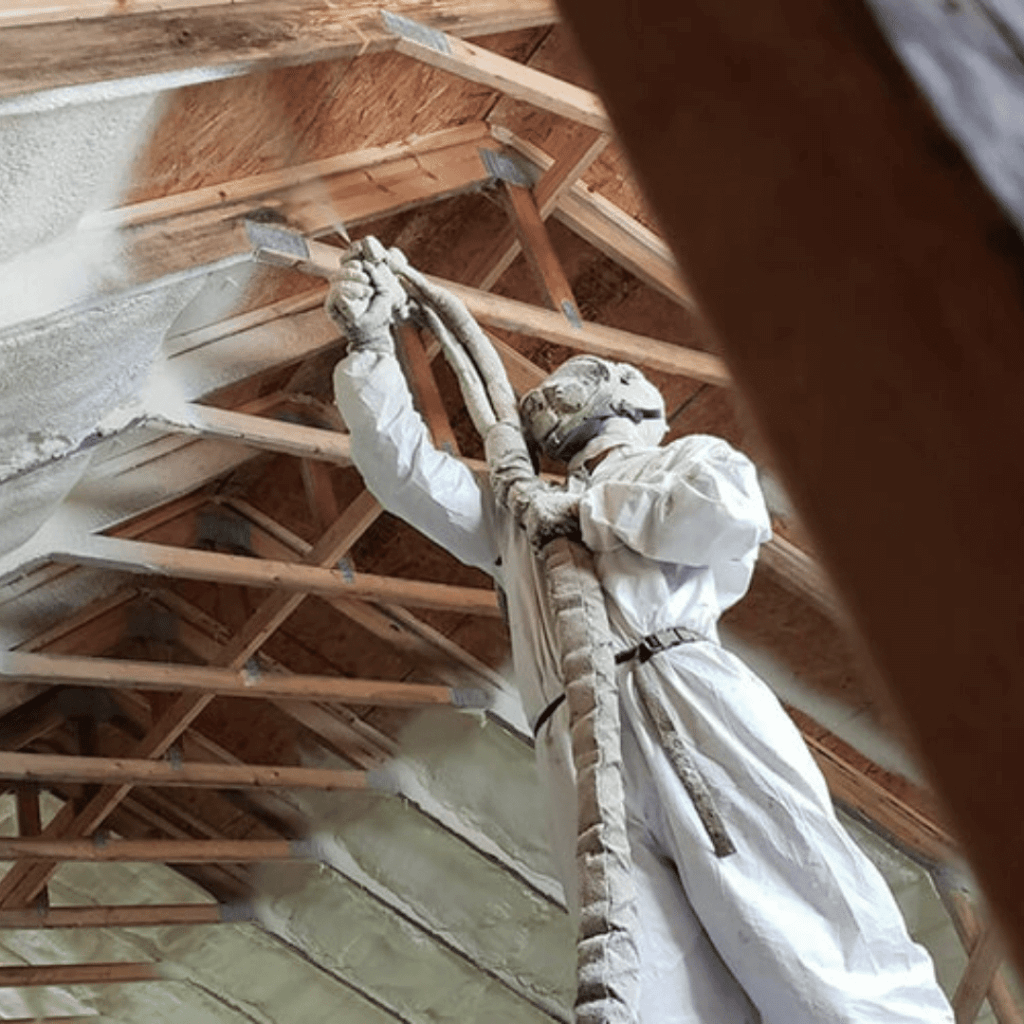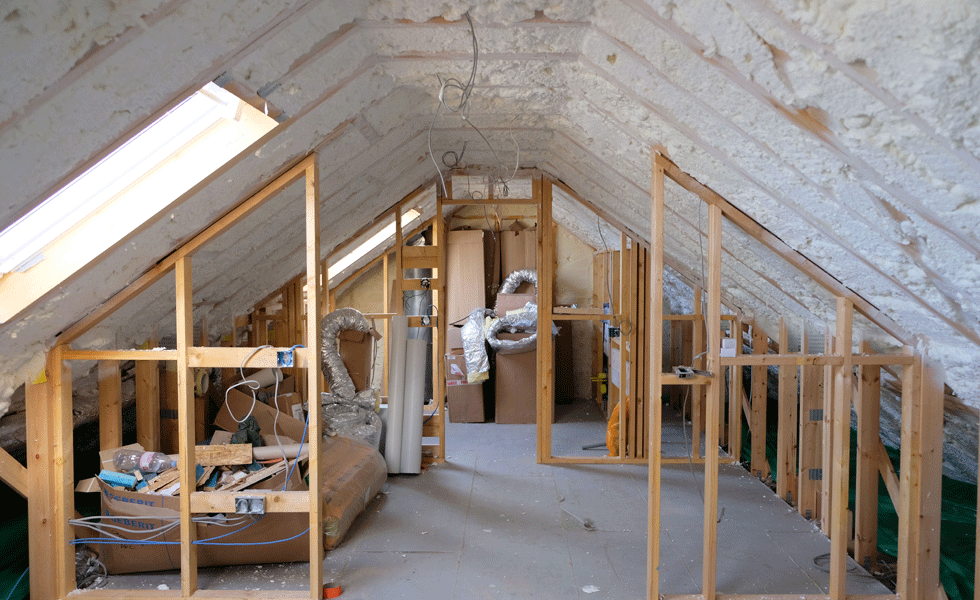Attic Insulation DFW: Boost Your Home's Worth and Efficiency
Wiki Article
Discover the Various Kinds Of Attic Insulation and Their Distinct Advantages for Your Home's Power Performance

Fiberglass Insulation
Fiberglass insulation is one of one of the most generally made use of materials for attic insulation as a result of its superb thermal performance and cost-effectiveness. Made up of small glass fibers, this material effectively catches air, producing a protecting obstacle that aids keep constant indoor temperature levels. Its high R-value per inch makes it particularly effective at resisting heat transfer, which is crucial for energy preservation in homes.
Setup of fiberglass insulation is fairly simple, usually offered in batts or loose-fill kinds, suiting various attic arrangements. In addition, it is non-combustible and immune to dampness, lowering the risk of mold and mildew growth. This longevity adds to its longevity, making fiberglass a viable long-lasting financial investment for property owners.
Additionally, fiberglass insulation is commonly made from recycled products, which boosts its eco-friendliness. The material can likewise add to soundproofing, minimizing noise transfer between spaces. While it is vital to put on protective equipment throughout setup to avoid irritation from the fibers, the overall advantages of fiberglass insulation, including power savings and environmental factors to consider, make it a prominent selection for boosting attic room performance and promoting a comfortable living setting.
Spray Foam Insulation
Spray foam insulation is a very reliable choice for attic room insulation, recognized for its premium air sealing and thermal efficiency. This cutting-edge insulation material is made up of a mixture of isocyanate and polyol material, which, when incorporated, increases swiftly to fill up spaces and dental caries in the attic room room. Its capability to adhere to different surfaces guarantees a continual obstacle against air leaks, significantly decreasing warm loss during colder months and warmth gain throughout warmer periods.One of the vital benefits of spray foam insulation is its high R-value per inch, which suggests it offers exceptional thermal resistance in a fairly slim application. This is especially useful in attic rooms where space is often minimal. Additionally, spray foam can help decrease wetness accumulation, lowering the risk of mold and mold development, which can be detrimental to both the framework and interior air top quality.
While the preliminary price of spray foam insulation may be higher than typical choices, its lasting power cost savings, paired with enhanced comfort and boosted home value, make it a beneficial financial investment for homeowners looking for improved power performance. Attic Insulation DFW. Generally, spray foam insulation stands apart as an efficient option for maximizing attic insulation
Cellulose Insulation

Cellulose insulation is a prominent option for attic room insulation, mostly made up of recycled paper items treated with fire retardants. This environmentally friendly choice is recognized for its exceptional thermal performance, efficiently decreasing heat transfer in both summertime and cold weather. The thick make-up of cellulose allows it to fill up spaces and voids in attic room rooms, supplying a seamless barrier against air leakages.
One of the considerable benefits of cellulose insulation is its ability to stand up to mold and mildew and bugs, owing to the fire retardant treatments made use of during manufacturing. Furthermore, it flaunts a high R-value per inch, which equates right into superior energy effectiveness. Home owners can anticipate reduced cooling and heating prices as an outcome of enhanced insulation.
Installment is typically completed through blowing loosened cellulose into the wanted area, permitting a efficient and quick procedure. This technique likewise lessens disruption to the existing framework. Cellulose insulation has a fairly reduced ecological effect, as its production Look At This procedure utilizes recycled materials, adding to sustainable building techniques.
Rock Wool Insulation
Among the various alternatives for attic room insulation, rock woollen, likewise referred to as mineral wool, stands apart due to its excellent thermal and acoustic performance. Made from recycled or all-natural products, rock woollen is produced by melting rock and spinning it into fibers, causing a product that uses outstanding insulation properties.Among the significant advantages of rock wool insulation is its high R-value, which suggests its efficiency in withstanding warmth flow. This particular not just improves energy effectiveness yet additionally adds to keeping a comfy indoor temperature level year-round. Furthermore, rock wool is naturally fire-resistant, making it a much safer alternative for homes as it can hold up against heats without melting or releasing toxic fumes.
Furthermore, rock woollen insulation succeeds in soundproofing abilities, successfully minimizing noise transmission in between spaces and from outside resources. This makes it a suitable option for property owners seeking a tranquil living environment. Moreover, rock wool is moisture-resistant, helping to avoid mold development and keeping the architectural integrity of the attic space. Overall, rock wool insulation provides a comprehensive solution for improving power efficiency, safety and security, and comfort in property setups.
Glowing Obstacle Insulation
Radiant obstacle insulation functions as a reliable remedy for minimizing warm transfer in attics, specifically in warmer climates. This type of insulation jobs by showing glowing warm far from living areas, thereby lowering the quantity of warm that gets in a home during warm weather - Attic Insulation DFW. Generally made up of a very reflective product, such as aluminum foil, radiant barriers are mounted in attics, facing the roofing, where they can intercept incoming warm from the sunThe main benefit of radiant barrier insulation is its capability to lower cooling costs. By showing warm as opposed to absorbing it, radiant barriers can aid keep a more steady interior temperature, reducing the work on cooling systems. This effectiveness translates right into lower energy bills and boosted comfort for house owners.
In enhancement to energy financial savings, glowing barriers can also add to enhanced indoor air quality. By decreasing warm buildup, they aid reduce moisture levels, which can prevent mold and mildew development and improve overall air blood circulation. When mounted appropriately, glowing obstacle insulation can be a very useful enhancement to any kind of energy-efficient home, making it see this a worthwhile consideration for house owners looking to improve their attic insulation technique.
Verdict
To conclude, recognizing the various kinds of attic room insulation-- fiberglass, spray foam, cellulose, rock wool, and radiant barriers-- enables home owners to make enlightened choices regarding energy efficiency. Each insulation kind provides distinct advantages, such as premium thermal resistance, dampness monitoring, and audio attenuation. By picking the suitable insulation product, substantial decreases in power expenses can be accomplished, along with enhancements in indoor convenience. Ultimately, the right choice adds to a more lasting living setting and advertises total energy preservation.

In final thought, recognizing the numerous types of attic room insulation-- fiberglass, spray foam, cellulose, rock wool, and radiant obstacles-- enables home owners to make educated decisions pertaining to energy performance.
Report this wiki page